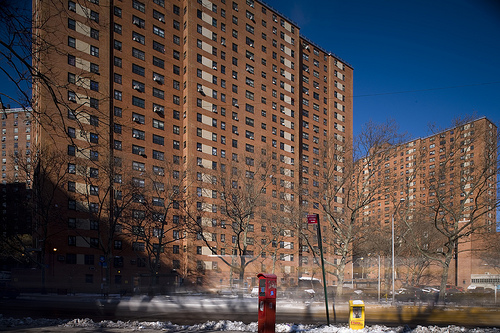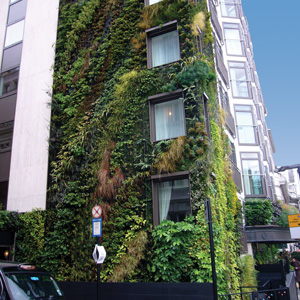
With most of New York City’s public housing projects built before the 1970’s moratorium on high-rise projects, what efforts have been made to make these government buildings more environmentally friendly? President Carter did not include public housing projects in his environmental standards for government-run buildings in the late 70’s, and today their lack of green technology makes them economically and environmentally inefficient. Back in 2009, the Obama Administration promised $4 Billion to update the technology through retrofitting many of the structures. While there may be little desire by policymakers to update the projects by more invasive means, there are cost-effective and environmentally friendly means that we can “green up” older public housing.
Some say the Administration’s plan, which involved switching to lower-energy lightbulbs and improving insulation and windows, is comprised of fairly rudimentary improvements. To be certain, it is extremely difficult to retrofit any pre-1970’s-era building and make it LEED certified, much less the massive brick and concrete towers constructed throughout the five boroughs and in cities nationwide. Other newer technologies, like solar blinds and paneling might suffer from inadequate maintenance as budgets vary over time. That’s not to say we can’t move to “green up” public housing in other ways.
One of the easiest and most useful policies could be the creation of green roofs on the top of the towers. These roofs, in simplest form platforms for lightweight sedum, reduce the amount of sunlight that hits the building infrastructure, thereby cutting down on the amount of energy required to cool the buildings in the summer. While creeping plants like ivy have been known to damage building infrastructure over time, constructing a lattice on the exterior of buildings on their sunny sides could similarly reduce cooling costs by shielding the sides of buildings. The first of these two options would be extremely cost-efficient and highly practical, considering efforts to “green up” the projects is basically a retrofitting process. While the second may involve compromising the building’s structural integrity if not carefully implemented, it could similarly serve as an effective strategy.


Other measures, like the collection of rainwater in particular, might be equally effective, but the infrastructure required might prevent their feasibility in an era where few officials want to spend any money on older forms of public housing, instead diverting their attention and funding towards programs like Section 8.
While the future of public housing should clearly involve newer, greener structures — a notable example being the Via Verde development in the Bronx — we can start seeing improvement on older structures today with the simple and cost-effective solutions of green roofs and siding.